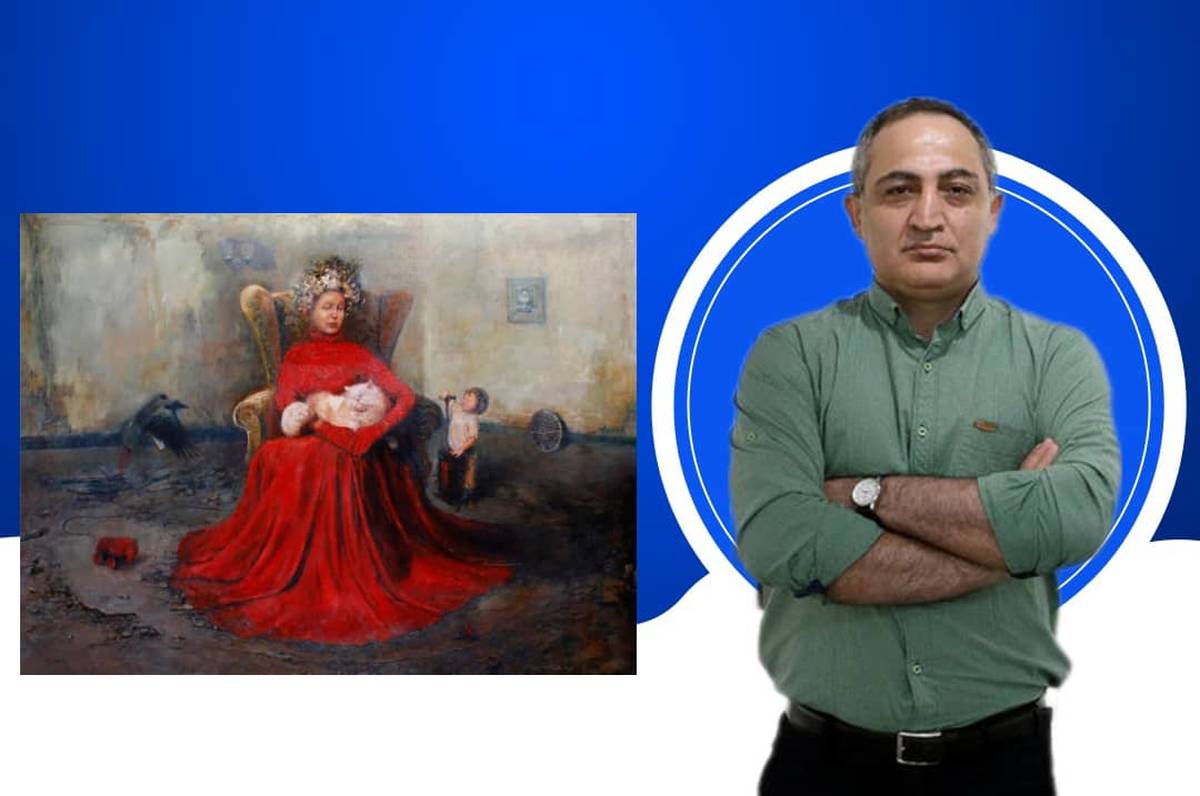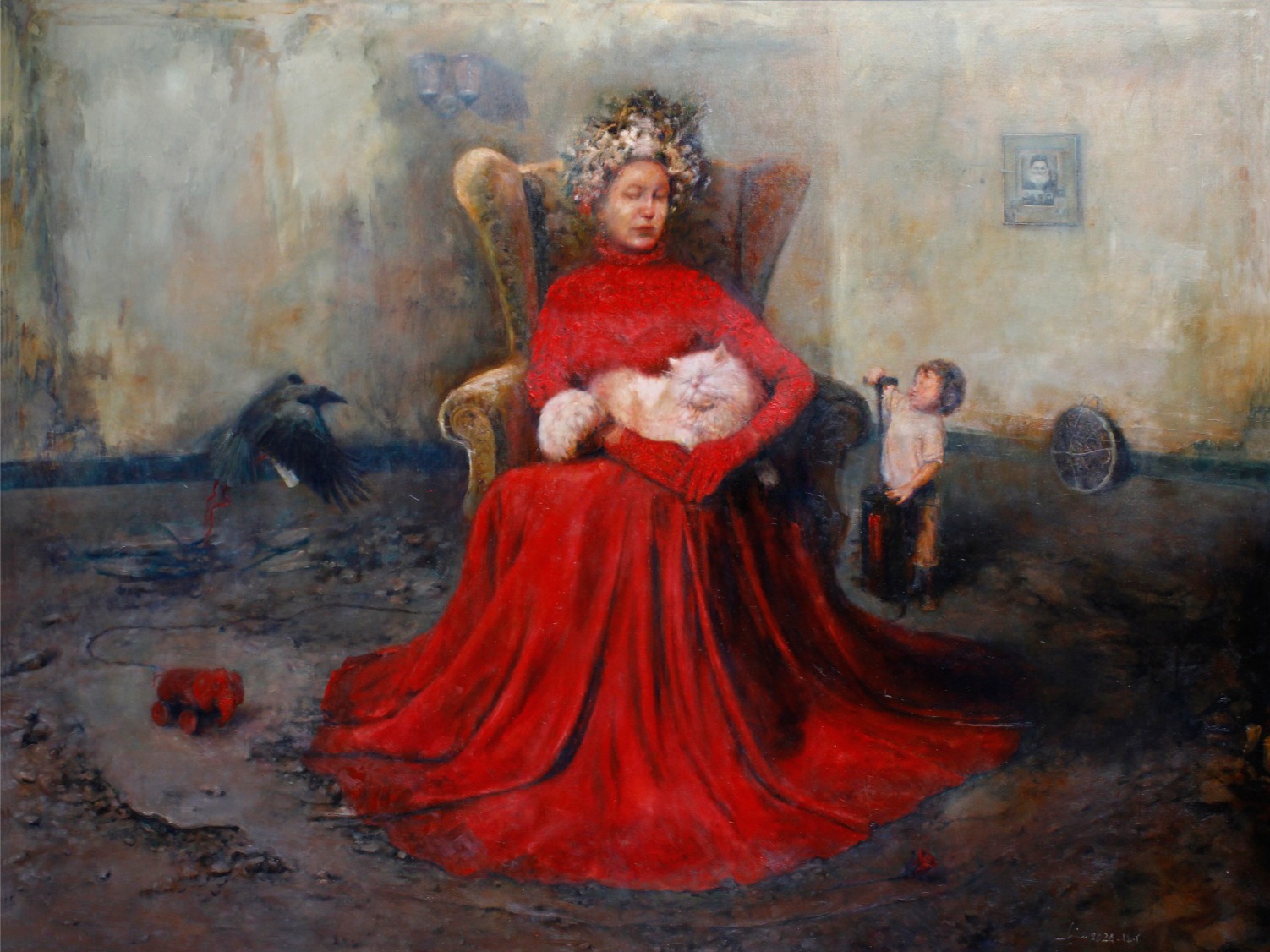
Azim Morakabatchi and the Lady in Red: A Majestic Scene of Symbols and Secrets
In the visual world of Azim Morakabatchi, silence speaks louder than screams. In the painting “The Lady in Red”—a striking and contemplative work by this artist—the viewer enters a realm of stillness, muted fears, and suppressed narratives.
ArtDayMe: Azadeh Jafarian : A beautiful and striking work by Azim Morakabatchi is currently displayed on the wall of Mojdeh Art Gallery’s office.
Titled “The Lady in Red,” this oil on canvas piece, measuring 230 × 155 cm, was created in 2024.
As with all of Morakabatchi’s works, the viewer is first captivated by the beauty and technical mastery of the artist’s design and composition. But as they continue to engage with the work, they enter a dialogue with the painting, exploring its secrets and intertextual readings.
In Morakabatchi’s visual universe, silence speaks louder than screams. In “The Lady in Red”—this artist’s striking and contemplative piece—the audience steps into a world of stillness, silent fears, and suppressed narratives.
This oil painting not only depicts a scene from life but also serves as an inward journey through the hidden layers of psyche and memory.
At the center of the image sits a dignified woman on a chair: dressed in red, holding a white cat, eyes closed, crowned with dried flowers or a symbolic tiara. She reigns like an isolated queen in a court of forgetfulness, dominating a gray and withered space.
To the right, a child stands gazing at the woman with a questioning or repressed expression. A crow in another corner and a forgotten photo frame on the wall complete the scene.
But “The Lady in Red” is more than a family portrait; this painting is a drama about power and silence, childhood and submission, femininity and dominance.

The woman in red symbolizes tradition, control, and a repressed order that still casts a shadow over the child’s mind.
Her vivid red dress evokes grandeur, violence, and suppressed desire all at once.
The white cat—beautiful but emotionless—embodies a false calm or indifference at the height of power.
The child, symbolizing the new generation, is merely an observer—still unable to speak. He has not yet passed beyond the shadow of “power,” still caught somewhere between dependence and protest. His silence is the painting’s loudest cry.
Morakabatchi’s work can be seen as a reflection of psychological and social structures: a metaphorical image of family, tradition, and inherited suffering passed down from generation to generation.
The woman represents collective memory; the child, the muffled voice of the future.
“The Lady in Red” is not just a painting, but a question: Is liberation from memory, from silence, and from hidden powers possible?
Or are we all merely children standing before a red-clad woman—eyes closed, yet ever-present?

Azim Morakabatchi’s multimedia exhibition titled “Mirage” was held from January 25 to February 8, 2025, at Mojdeh Art Gallery.
This exhibition—which included a poem, a painting, a sculpture, and two art books—received remarkable attention from art enthusiasts and the public.
“Mirage” by Azim Morakabatchi was priced at one billion tomans (approx. 16,000 USD at the time).
Morakabatchi, whose recent works have garnered much attention, is the creator of artworks housed in prestigious collections such as Bank Saman and important private holdings.
With “Mirage,” he held his third solo exhibition at Mojdeh Art Gallery.
It is worth noting that Morakabatchi’s latest exhibition, “Mirage,” was held in February 2025 at Mojdeh Art Gallery. This multimedia show, which included a poem, a painting, a sculpture, and two art books, was met with significant interest from art lovers and audiences.
Mirage was priced at one billion tomans (approx. 16,000 USD).
Morakabatchi, who has gained significant recognition in recent years, is known for works that reside in prominent collections such as Bank Saman and major private archives.
Mirage was his third solo exhibition at Mojdeh Art Gallery.

LEAVE A RELPY